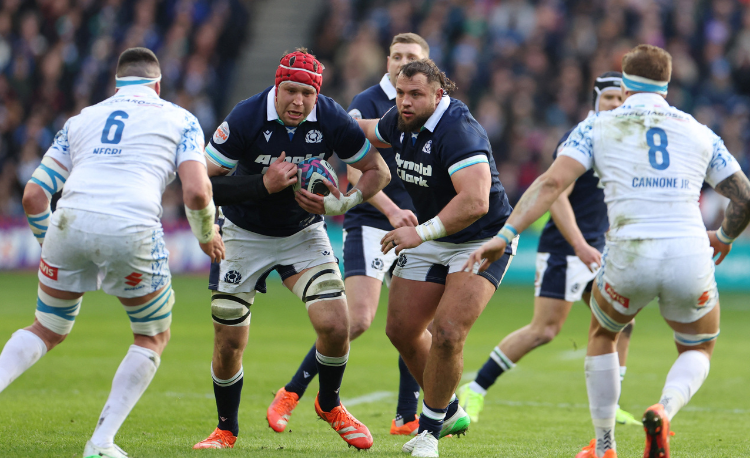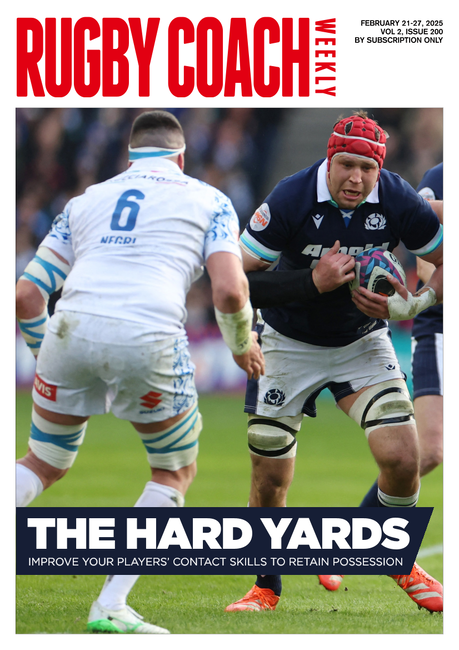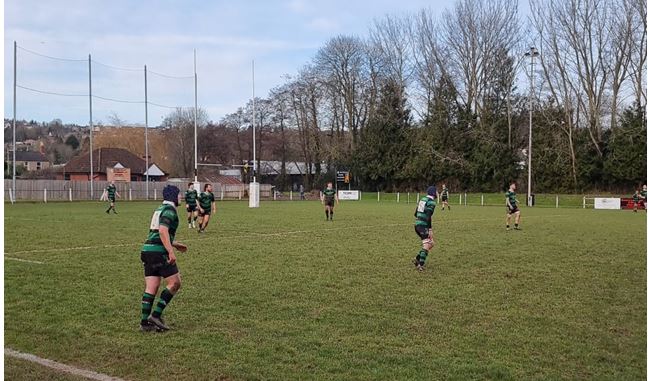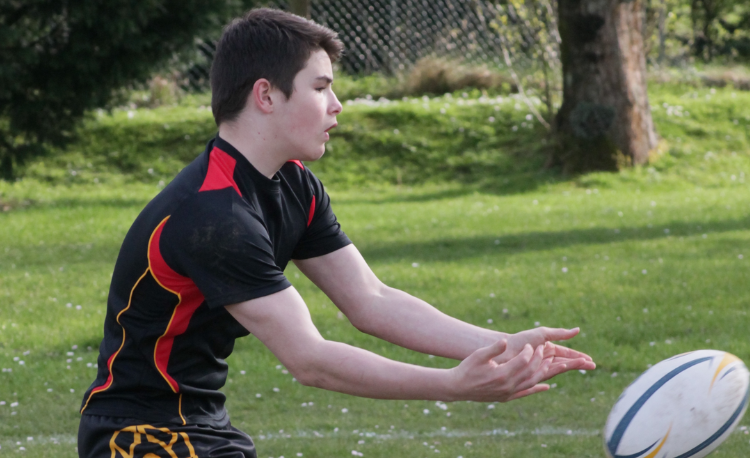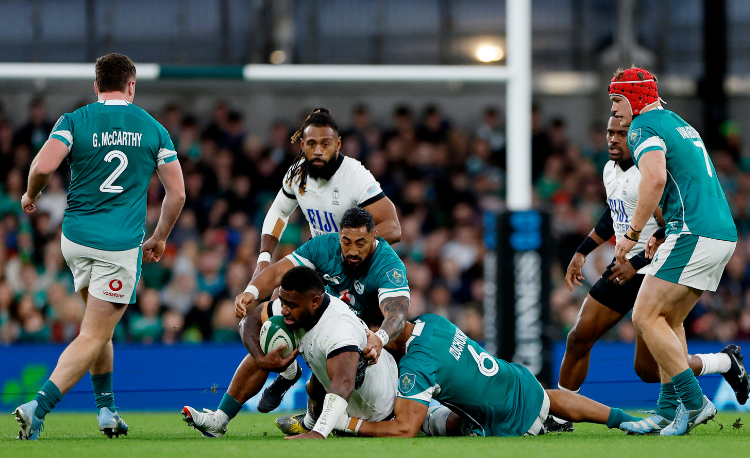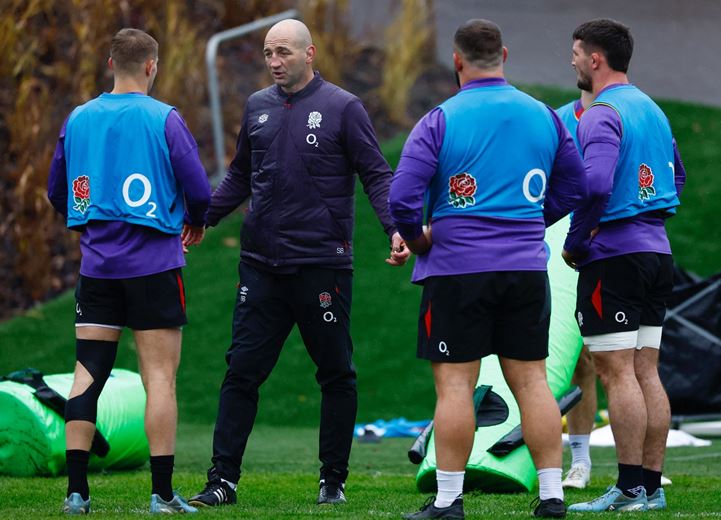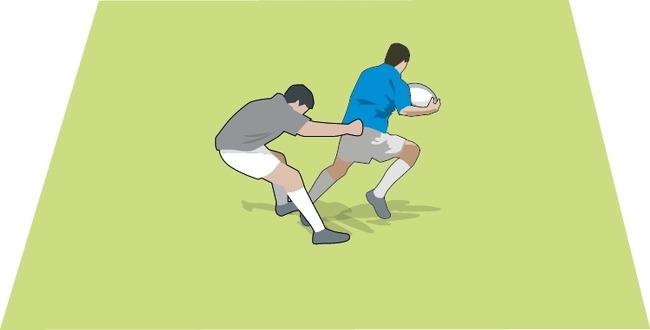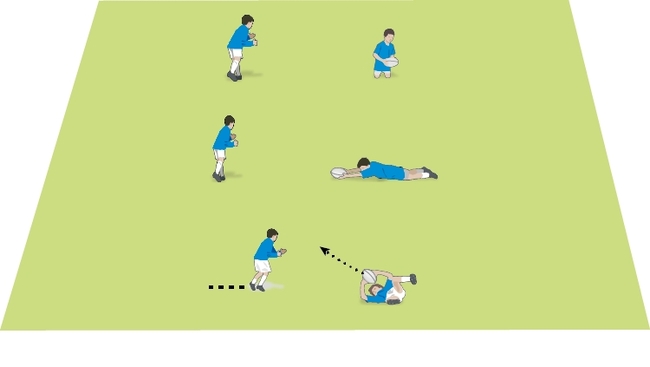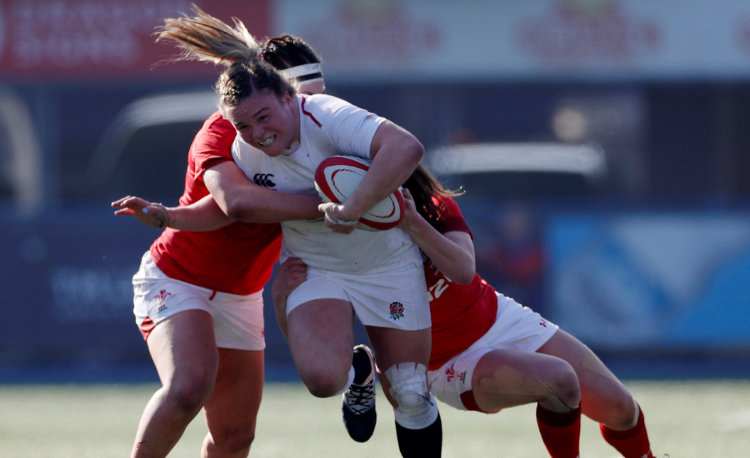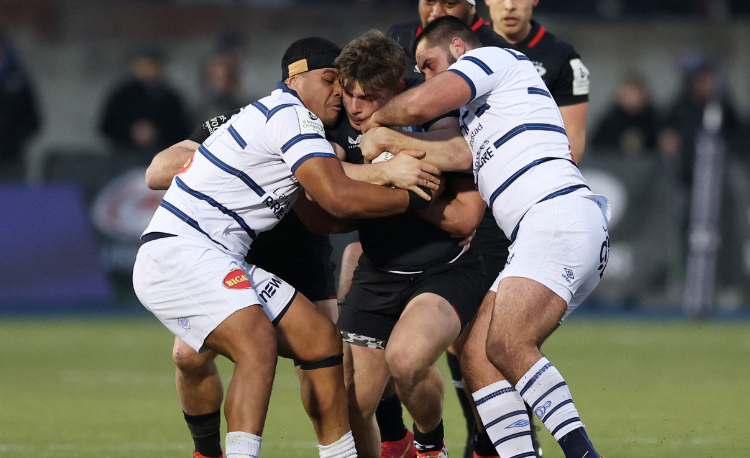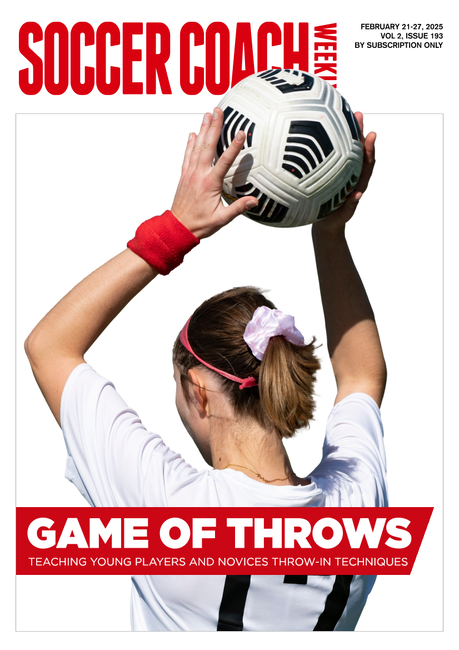Contact session expert
Editor Dan Cottrell adds further context to two sessions.
Tony Hanks – who has coached with Wasps and Sale Sharks, before becoming high performance manager at the Blues Super Rugby franchise – says the challenge for any coach is to make their sessions powerful learning environments.
When it comes to contact, the challenge is greater because physicality is mixed with decision-making.
The breakdown is such a vital area of the game that the best teams need to concentrate on the detail all the time in training. Unless you win the contact area, you will struggle to achieve attacking options and disorganise defences.
Tony says: "As we progress from pre-season to in-season, we want the players to develop good habits, both in their technique and their decision-making.”
There are three key elements:
- The ball carrier into (or through) contact.
- Ball presentation (including offload).
- The role of the support player.
A meaningful contact session, which develops techniques into decision-making situations, should last for around 30-40 minutes.
However, you can run shorter elements to fit around a more general session. It will progress from working on the detail of the underpinning elements, and then draw it together into game specific, decision-making exercises.
To allow the session to move smoothly, Hanks and his players will have discussed the exercises before the session and will probably be using some established exercises that they regularly use. He wants the players to concentrate on the skills, not the drills.
The first 15 minutes of the session will be split into three grids. Each player will spend five minutes in each grid.
The focus will be on one particular technique, based around the ball carrier, ball presentation and support. The groups will have highlighted key points they want to cover, and that will lead the practice.
The intensity is quite low, with the players concentrating on the detail. For example, you could check their hand placement on the ball when they are going into contact. Are they able to manipulate it so they can pass out of the tackle, both to the left and right?
Other skills might include how they fend the defender, or how they can place the ball back for the next support player. The support players might be thinking about the angle and timing to reach a potential breakdown situation.
After the three grids have been completed, the next stage is to put this into some decision-making exercises. An example of this is The contact triangle. It brings together elements of footwork before contact or the fend, with support roles and decision-making at the tackle.
Hanks will run this activity for 10 minutes, with another decision-making exercise for the last 10 minutes.
That’s normally enough, but if you want a really intense session, you could finish up with a ’backyard’ game of rugby. This is full-on, but with no scrums or lineouts.
Passing power, in and out of contact
I have previously spoken about “repetition without repetition”, which is where a player performs the same technique but under slightly different constraints.
In Power pass, the attacker is held back by their shorts. They run forward – slowly, and often in a stuttering manner – receive a pass and then pass it on.
It can provide an element of comedy. Some of the holders do too good a job, and the poor attacker is pretty much at a standstill. Eventually, they find a way to move forward, and then make a hash of the catch and pass.
Over time, they become more adept at driving their legs, but their movements are still more random than normal running. This provides a good deal of variability.
Some of you might have access to harnesses or bands, which can be used to the same effect.
The key is that you are still developing good habits for catching and passing, even when the players have less control of their body movements.
This helps them pass more effectively out of the tackle, or receive passes when they have just adjusted their running lines.
I tend to ask them to hold the shorts, sometimes with just one hand. This twists the attacker even more, making either the catch or the pass more difficult.
The outcomes should improve not just passing, but passing out of contact, which is often called offloading.
Done well, it can lead to some spectacular and exciting continuity. Here is a good chance to encourage players to do it.
Related Files
Newsletter Sign Up
Coaches Testimonials

Gerald Kearney, Downtown Las Vegas Soccer Club

Paul Butler, Florida, USA

Rick Shields, Springboro, USA

Tony Green, Pierrefonds Titans, Quebec, Canada
Subscribe Today
Be a more effective, more successful rugby coach
In a recent survey 89% of subscribers said Rugby Coach Weekly makes them more confident, 91% said Rugby Coach Weekly makes them a more effective coach and 93% said Rugby Coach Weekly makes them more inspired.
Get Weekly Inspiration
All the latest techniques and approaches
Rugby Coach Weekly offers proven and easy to use rugby drills, coaching sessions, practice plans, small-sided games, warm-ups, training tips and advice.
We've been at the cutting edge of rugby coaching since we launched in 2005, creating resources for the grassroots youth coach, following best practice from around the world and insights from the professional game.
